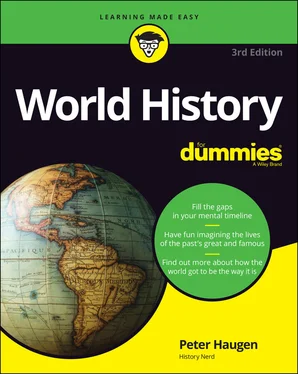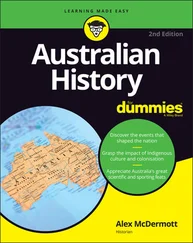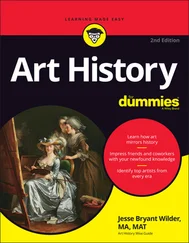Peter Haugen - World History For Dummies
Здесь есть возможность читать онлайн «Peter Haugen - World History For Dummies» — ознакомительный отрывок электронной книги совершенно бесплатно, а после прочтения отрывка купить полную версию. В некоторых случаях можно слушать аудио, скачать через торрент в формате fb2 и присутствует краткое содержание. Жанр: unrecognised, на английском языке. Описание произведения, (предисловие) а так же отзывы посетителей доступны на портале библиотеки ЛибКат.
- Название:World History For Dummies
- Автор:
- Жанр:
- Год:неизвестен
- ISBN:нет данных
- Рейтинг книги:3 / 5. Голосов: 1
-
Избранное:Добавить в избранное
- Отзывы:
-
Ваша оценка:
- 60
- 1
- 2
- 3
- 4
- 5
World History For Dummies: краткое содержание, описание и аннотация
Предлагаем к чтению аннотацию, описание, краткое содержание или предисловие (зависит от того, что написал сам автор книги «World History For Dummies»). Если вы не нашли необходимую информацию о книге — напишите в комментариях, мы постараемся отыскать её.
World History For Dummies,
For Dummies
World History For Dummies
World History For Dummies — читать онлайн ознакомительный отрывок
Ниже представлен текст книги, разбитый по страницам. Система сохранения места последней прочитанной страницы, позволяет с удобством читать онлайн бесплатно книгу «World History For Dummies», без необходимости каждый раз заново искать на чём Вы остановились. Поставьте закладку, и сможете в любой момент перейти на страницу, на которой закончили чтение.
Интервал:
Закладка:
Being Human Beings
Earth formed about 4.5 billion years ago, or so the astrophysicists say. My mind balks at the thought of such an expanse of time.
I do better starting with recent times, here meaning the many thousands of years that people have lived on Earth. Recent is a relative term. The modern human species — meaning people who are anatomically the same as you — may not be much more than 100,000 years old, although scientific estimates vary. And paleoanthropologists (human-fossil nerds) say that human beings didn’t start acting fully “human” until more recently. Humanity turned a corner roughly 60,000 years ago, when stone tools got more sophisticated, and people began carving patterns into rocks and bones, using charcoal to make exquisite cave paintings, and inventing rafts to cross water. These artistic expressions and engineering tasks mark them as being more like you and less like earlier models of the hominid (humanlike) family. Many scholars refer to members of our species who lived 30,000 years ago as being fully modern. In that usage, modern, like recent, is a relative term. Obviously, it doesn’t mean people who share TikTok videos. We can take it to mean people who behaved a bit more like us and less like earlier prehistoric humans had.
You’ve probably seen the familiar illustration showing successive ancestor species marching single file, ever more upright and less hairy, toward modern humanity. Evolution didn’t happen that way, however. Evolution is rarely neat. Different kinds of more-or-less humanlike animals lived at the same time. Many were genetic dead ends and died out, although the genetic record reveals that other, related types of humans — including Neanderthals and Denisovans — interbred with our own ancestors, so in that way, they are us. All earlier hominids are extinct … unless you buy the idea that Sasquatch (Bigfoot) and Yeti (the Abominable Snowman) are your reclusive country cousins.
 As a species, modern humans are young, and again, I’m speaking relatively. Homo erectus — if not your direct ancestor, at least a close relative — was on Earth much longer than modern people have been here. Homo erectus lived from about 1.7 million years ago to perhaps as recently as 108,000 years ago.
As a species, modern humans are young, and again, I’m speaking relatively. Homo erectus — if not your direct ancestor, at least a close relative — was on Earth much longer than modern people have been here. Homo erectus lived from about 1.7 million years ago to perhaps as recently as 108,000 years ago.
If you think of the entire time since the emergence of hominids, perhaps 4 million years ago, to the present day as a single 24-hour day, Homo erectus lasted more than 8 hours. On that scale, modern humans have been here for about 15 minutes.
Nearing the Neanderthal
Neanderthals lived over a wide area stretching from today’s Belgium southward to Spain and eastward around the Mediterranean Sea to Turkey. This big-brained branch of the family arose about 150,000 years ago in Europe. After swapping some genes with our species, Neanderthals died out perhaps as recently as 28,000 years ago.
While Neanderthals were still in their prime, glaciers receded, and anatomically modern folks migrated into the Neanderthal part of the world. The two kinds of humans coexisted for thousands of years, both leaving evidence of their camps among the same hills, valleys, and caves. It’s perhaps inevitable that they interbred, but nobody knows how well they got along. Did modern humans wipe out their Neanderthal cousins over centuries of brutal genocide? Did the newcomers have better survival skills?
If it bothers you that Neanderthals mated with people like us, it shouldn’t. They had big brains — maybe bigger than ours — and they did some rather modern things, such as burying their dead with flowers and ochre (a reddish clay used like body paint). They made tools and art, too, although some researchers argue that they may have borrowed ideas from their more “modern” neighbors.
Neanderthals lived over a wide geographical area, but not as wide as that inhabited in a relatively short time by their successors. Our kind evolved in Africa, where earlier hominids also originated. Then they migrated on their two spindly legs not just into the Mideast and Europe, where the Neanderthals had been coping with ice ages, but over all the other continents except Antarctica.
Talking like no one had before
Before creating counting devices and pictures on rocks, human beings accomplished a more remarkable feat: They talked. Other species communicate with noises, and some (birds and certain monkeys, for example) have complex vocabularies. But no other creature has anything as versatile or expressive as human language.
Scientists don’t know when language happened. No one can tell whether the first anatomically modern humans were able to make all the sounds that their descendants do, because soft tissues such as the tongue and larynx rot away, even when bones fossilize. We don’t know how well, or even whether, Neanderthals and Denovisans talked. It seems likely that they did. Yet whenever it came about, nuanced language brought huge change. As people gave specific meanings to combinations of vocal sounds, they were devising sound symbols. As with some other species, a noise stood for a thing, an action, or an emotion. But humans got fancy with their noisemaking. They went beyond warning about predators and calling the children to dinner and progressed to sharing more complicated information.
People began to amass knowledge— not just as individuals, but as societies. They could always learn by watching and doing; now they could also understand by being told. The how-to genre was born.
Through language, early humans benefited from the experiences of tribe members who were no longer living. After tribes built lore (a body of shared knowledge), they could embellish it, spinning hunting stories that did more than help successive generations find and kill large prey, for example. Within several generations, tribes surely had more fanciful folktales about ancestors, heroes, creation, spirits, and gods who commanded the stars and the Earth. After writing developed, it was possible for cultures to leave a permanent record of events.
Herodotus the Greek, credited as the father of history, took his subject to the level of intellectual inquiry in the fifth century BC as he gathered 1,000-year-old stories from around the Mediterranean. As the body of oral and written history grew, there came a need to organize it.
Making sense of AD, BC, CE, and BCE
In 1854, scientists studying fossil skulls that were discovered in European caves, decided to name their subject Homo Neanderthalensis . Like 1492, when Columbus sailed, 1854 is AD, just like this year. AD stands for Anno Domini. That’s Latin for “Year of the Lord,” referring to the Christian era, or the time since Jesus was thought to have been born. Before that, years are designated as BC, or Before Christ. Historians now prefer CE (for Common Era ) instead of AD and BCE (for Before the Common Era ) instead of BC , for the obvious reason that a lot of non-Christians and non-Christian nations use the system. AD and BC, however, are what most people are used to. They’re widely understood and deeply ingrained, so I stick with them.
The years BC are figured by counting backward. That’s why the year when 32-year-old Alexander the Great died, 323 BC, is a smaller number than the year when he was born, 356 BC.
Yet Alexander never thought of himself as living in backward-counting years three centuries before Jesus. Our system of counting years didn’t come about until 1582, when Pope Gregory XIII decreed it. Popes had that kind of power back then. Gregory’s system, called the Gregorian calendar, gradually became the one that most of the world uses to track appointments, supplanting older traditional calendars (and there have been many of them) for civil business, if not religious observances. The Gregorian system revised an earlier one named for Roman statesman and general Julius Caesar, which in turn replaced an even older Roman calendar.
Читать дальшеИнтервал:
Закладка:
Похожие книги на «World History For Dummies»
Представляем Вашему вниманию похожие книги на «World History For Dummies» списком для выбора. Мы отобрали схожую по названию и смыслу литературу в надежде предоставить читателям больше вариантов отыскать новые, интересные, ещё непрочитанные произведения.
Обсуждение, отзывы о книге «World History For Dummies» и просто собственные мнения читателей. Оставьте ваши комментарии, напишите, что Вы думаете о произведении, его смысле или главных героях. Укажите что конкретно понравилось, а что нет, и почему Вы так считаете.












